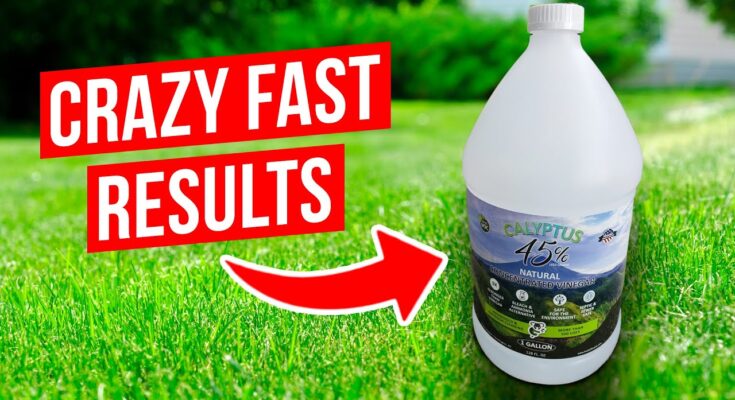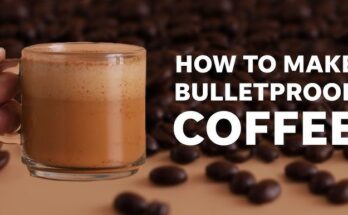Vinegar Weed Killer Recipe: Are you tired of dealing with stubborn weeds in your garden or driveway? Don’t want to resort to harsh chemicals that might harm your pets, children, or the environment? Then you’re not alone. More and more people are turning to natural weed control solutions, and vinegar is at the top of that list.
Natural weed killers like vinegar offer a safer, eco-friendly alternative to commercial herbicides. The beauty of using household ingredients is not just about being green—it’s about being smart. You’re using things you already have in your kitchen or can easily find at the store. Plus, you save money while keeping your garden lush and safe.
But here’s the deal: not all natural weed killers are created equal. Some recipes barely work, while others can be almost too powerful. That’s why we’re giving you a precise, effective, step-by-step guide to making your own vinegar weed killer—one that gets the job done right without harming the environment.
Why Choose Natural Weed Killers?
Going natural isn’t just a trend—it’s a necessity for many people who care about their health, their families, and the planet. Traditional weed killers often come loaded with chemicals that can linger in your soil, run off into water supplies, and affect wildlife. And let’s not forget the impact on beneficial insects like bees and butterflies.
Natural weed killers provide peace of mind. You know exactly what’s in the mix and how it’s going to behave. There’s no mystery, no long list of unpronounceable ingredients, and no red flags about environmental damage. Whether you have kids playing in the yard or pets sniffing around, using vinegar means you’re keeping things safe while still keeping weeds at bay.
The Dangers of Chemical Herbicides
Commercial herbicides often contain glyphosate, a controversial ingredient linked to potential health risks. Prolonged exposure has raised concerns about cancer, hormonal disruptions, and environmental contamination. That’s reason enough to explore safer alternatives, especially when natural options are just as effective for small-scale weed control.
If you’ve ever read the warning labels on a bottle of chemical weed killer, you already know it’s not something you want to mess with. The masks, gloves, and safety goggles aren’t just for show—they’re a sign you’re dealing with something potentially hazardous.
Understanding How Vinegar Works as a Weed Killer
You might be wondering, “How can something as simple as vinegar kill weeds?” The answer lies in one key ingredient: acetic acid.
Acetic Acid: The Active Ingredient
Vinegar typically contains around 5% acetic acid, though horticultural vinegar can go as high as 20%. This acid is the secret weapon in your battle against weeds. It acts by drying out the plant’s leaves and stems, essentially burning the plant on contact. For small, young weeds, this can be enough to wipe them out entirely.
However, it’s important to know that vinegar doesn’t work like a systemic herbicide. It won’t travel to the roots of the plant, so deeply rooted or perennial weeds might need multiple treatments or a little extra help—like salt or boiling water.
What Types of Weeds Does It Kill?
Vinegar works best on:
- Annual weeds (like crabgrass or chickweed)
- Young weeds with soft stems
- Weeds growing in cracks or gravel paths
It struggles with:
- Perennial weeds (like dandelions or thistles)
- Woody-stemmed plants
- Weeds with deep taproots
That’s why it’s often used as a surface-level solution, especially in areas like patios, sidewalks, and driveways where you’re less worried about soil health.
Best Vinegar Types for Weed Killing
Not all vinegars are created equal when it comes to weed control. While you can grab that bottle of white vinegar from your pantry, you might get better results with stronger, horticultural-grade vinegar depending on your weed situation.
White Vinegar vs. Apple Cider Vinegar
Let’s break it down:
- White Vinegar: The most commonly used vinegar for weed killing. It’s cheap, accessible, and contains about 5% acetic acid. Works well on soft-stemmed weeds.
- Apple Cider Vinegar: It can be used, but it’s usually more expensive and often less concentrated. It might smell nicer, but when it comes to weeds, power matters more than fragrance.
If you’re aiming for effectiveness, white vinegar is your go-to. Unless you’re experimenting or have extra apple cider vinegar lying around, stick to white vinegar.
What Strength of Vinegar Works Best?
Here’s a general guide:
- 5% Acetic Acid (Household Vinegar): Works for small, young weeds. Requires reapplication.
- 10-20% Acetic Acid (Horticultural Vinegar): Much stronger, effective on tougher weeds, but needs caution during application. Can harm skin and surrounding plants.
For most home gardens and sidewalks, starting with 5% vinegar is a safe and effective approach. If you’re battling persistent weeds or want quicker results, consider stepping up to a 10% solution.
Ingredients You’ll Need
Ready to get mixing? Here are the ingredients that form the core of an effective vinegar weed killer:
Vinegar
As discussed, white distilled vinegar is best. Aim for 5% acetic acid for regular use or 10-20% for more powerful results. One gallon should be enough for a single application on a medium-sized area.
Dish Soap
This might sound odd, but dish soap is the secret ingredient that makes vinegar even more effective. It acts as a surfactant, breaking down the waxy coating on plant leaves so the vinegar can penetrate and stick better. Just one tablespoon is enough per gallon of vinegar.
Choose a plain, biodegradable dish soap without any additives or bleach.
Salt (Optional for Tough Weeds)
Salt can increase the effectiveness of your vinegar weed killer, especially for areas like driveways where you don’t want anything growing back. It dehydrates the plant and prevents regrowth by altering the soil.
Use with caution, though. Salt can remain in the soil and make it infertile over time. Avoid using it in garden beds or near any plants you care about.
Basic Ingredient List:
- 1 gallon white vinegar (5-20% acetic acid)
- 1 tablespoon dish soap
- 1/2 to 1 cup salt (optional)
Step-by-Step Vinegar Weed Killer Recipe
It’s one thing to know what goes into a vinegar weed killer—but it’s another to mix and apply it properly for maximum effect. The process is straightforward, but paying attention to detail can make the difference between wiping out weeds and merely giving them a vinegar bath.
Mixing the Ingredients
Here’s your go-to formula for a powerful homemade vinegar weed killer:
Ingredients:
- 1 gallon of white vinegar (5% acetic acid for light weeds, up to 20% for heavy-duty jobs)
- 1 tablespoon of dish soap (acts as a surfactant)
- 1/2 cup of salt (optional, for long-lasting effects in non-planting areas)
Instructions:
- Choose a large container or bucket – You want something big enough to hold and stir your mixture without spills.
- Pour the vinegar in first – Start with your gallon of vinegar.
- Add the salt next – Stir well until it dissolves. Warm vinegar can help this process.
- Add the dish soap last – Mix gently at this stage. You don’t want to create too many suds, just enough to integrate the soap.
Once it’s mixed, pour your solution into a spray bottle or garden sprayer. Make sure it’s labeled clearly—especially if you’re storing any leftovers. You don’t want anyone mistaking it for plain vinegar!
Pro tip: Don’t use a metal container. The salt and vinegar combo can corrode it. Stick to plastic or glass.
Proper Application Technique
Spraying the mixture is easy, but doing it the right way maximizes its effectiveness. Here’s how to do it like a pro:
- Spray directly on the leaves – Focus on full coverage but don’t drench the soil, especially if you plan to plant in that area later.
- Target the base of the weed – Aim for where the plant meets the ground to hit the most vulnerable parts.
- Avoid spraying on windy days – Drift can damage nearby plants, even ones you want to keep.
- Use in non-planting zones – If you’re using salt, only apply it where you don’t intend to grow anything again.
Spray early in the morning or mid-day when the sun is strong. Vinegar works best when it can dry out the plant quickly with heat.
Ideal Weather and Timing for Best Results
Timing is everything. Here’s what you need to know to get the best bang for your buck (and your vinegar):
- Choose a sunny, dry day – Sunlight speeds up the drying process and intensifies the vinegar’s effects.
- Avoid rain within 24 hours – Rain will wash off your mixture and render it useless. Check the forecast before you spray.
- Best time of day: Mid-morning to early afternoon – You want strong sunlight but not scorching heat that could evaporate the mixture too quickly.
You should start to see results in just a few hours, with visible wilting by the end of the day. Most small weeds will be dead within 24–48 hours.
Precautions and Safety Tips
Natural doesn’t mean harmless. Even though this is a homemade weed killer, you should still use caution to avoid damage to plants, soil, and yourself.
Wear Protective Gear
Vinegar, especially in higher concentrations, can irritate skin and eyes. When handling 10-20% acetic acid or adding salt:
- Wear gloves
- Use goggles
- Work in a well-ventilated area
Protect Desirable Plants
This spray is non-selective—it kills whatever it touches. To prevent damage to surrounding plants:
- Use cardboard or plastic as a shield
- Apply with a fine-mist spray nozzle for more control
- Avoid spraying in windy conditions
Use Sparingly with Salt
Salt can be your best friend or your worst enemy. While it boosts the effectiveness of your weed killer, it can ruin soil quality permanently. Never use it near garden beds, tree roots, or lawns.
If you’re working in a high-traffic area like sidewalks or gravel paths, go for it. But in areas where you may want to plant later, skip the salt.
Storage Tips
If you mix more than you need, you can store the vinegar solution for later use. Just make sure you:
- Use a clearly labeled container
- Store in a cool, dark place
- Shake well before reusing (especially if salt was added)
This mix has a long shelf life, but it’s best used fresh for maximum potency.
Common Mistakes to Avoid
Homemade weed killers sound simple, but many people make rookie errors that reduce their effectiveness. Let’s make sure you don’t fall into those traps.
1. Spraying at the Wrong Time
Timing really does matter. If you apply the solution when rain is on the horizon or temperatures are too low, you’ll end up wasting your mix. Always choose a warm, sunny, and dry day.
2. Using Too Much or Too Little Soap
Dish soap is meant to help the vinegar stick to the plant—not lather it up. If you go overboard, you might dilute the vinegar or clog your sprayer. Too little, and the solution might just slide off the leaves. Stick to one tablespoon per gallon.
3. Ignoring Surrounding Plants
Vinegar doesn’t discriminate. It will kill grass, flowers, and veggies just as fast as weeds. Be mindful of where you spray and always protect your desirable plants.
4. Thinking One Spray is Enough
Some stubborn or perennial weeds may need multiple treatments. Don’t be discouraged if they bounce back a bit. Reapply after a few days, and they’ll usually give up.
Where and When to Use Vinegar Weed Killer
Knowing where and when to use your vinegar-based weed killer is just as important as knowing how to make it. Certain locations and situations are perfect for this natural remedy.
Ideal Locations:
- Driveways and Sidewalk Cracks – Weeds love these spaces, and vinegar kills them without staining or damage.
- Gravel Paths – Keeps weeds from taking over your stone or mulch-covered paths.
- Fences and Walls – Weeds that creep along borders can be tackled easily with a direct spray.
- Garden Beds (without salt) – If you skip the salt, vinegar can be used to spot-treat weeds without harming future planting.
Best Time of Year:
- Spring and Early Summer – When weeds are young and vulnerable.
- After Rainfall – Surprisingly effective, since weeds are actively growing and absorbing.
How Long Does Vinegar Weed Killer Take to Work?
You’ve sprayed your weeds and you’re waiting for the magic to happen—but how long does it actually take for vinegar weed killer to show results?
Quick Visual Results
Most of the time, you’ll see visible wilting within 2 to 4 hours of application—especially on a hot, sunny day. Weeds will begin to:
- Turn brown or yellow
- Shrivel and dry out
- Collapse as moisture is pulled from their leaves
In optimal conditions, smaller weeds can die completely in 24 to 48 hours.
Factors That Affect Timing
Several variables can influence how quickly the vinegar works:
- Type of weed: Annual weeds die faster than perennials with deeper root systems.
- Weather: Sunlight speeds up the process. Cooler or cloudy days may delay results.
- Vinegar strength: Higher acetic acid concentrations work more quickly and effectively.
- Weed maturity: Younger weeds are more vulnerable than established ones.
When to Reapply
If weeds start to regrow or the treatment doesn’t fully kill them, you may need a second application after 3 to 5 days. Persistent or perennial weeds may need a couple of treatments spaced out over a week.
Does Vinegar Kill Weeds Permanently?
The answer depends on how you use it—and what type of weeds you’re dealing with.
Short-Term vs. Long-Term Effects
- On annual weeds: Vinegar is often enough to kill them completely. Once the top growth is gone, they’re done for the season.
- On perennial weeds: Vinegar only damages the surface unless used repeatedly. Roots often survive and regrow unless you apply multiple times or combine with manual removal.
- With salt added: You increase the chances of long-term control, especially in areas where you don’t want anything to grow again.
Soil Considerations
Vinegar itself breaks down quickly in soil and doesn’t linger or cause long-term damage. However, salt can remain in the soil for a long time and create an inhospitable environment for all plant life. Use it selectively and never in garden beds.
For Permanent Weed Control
If you’re seeking a more permanent solution:
- Repeat applications every few weeks during the growing season.
- Add salt in areas like gravel or patios.
- Manually remove root-heavy weeds after spraying.
Vinegar weed killer is ideal for maintenance and prevention, not full eradication in every case. But when used correctly, it can keep your yard or driveway weed-free with minimal effort.
Pros and Cons of Vinegar Weed Killer
Like any method, using vinegar to kill weeds comes with both upsides and limitations. Here’s a quick breakdown to help you decide if it’s right for your situation.
Pros:
- ✅ Natural and non-toxic – Safe for pets, kids, and the environment when used without salt.
- ✅ Affordable and accessible – Ingredients are cheap and easy to find.
- ✅ Quick-acting – See visible results within hours.
- ✅ Great for spot treatment – Perfect for driveways, patios, and garden edges.
Cons:
- ❌ Non-selective – Kills anything it touches, including your favorite flowers.
- ❌ Not root-deep – Doesn’t kill the roots of perennials without repeat application.
- ❌ Temporary solution – Weeds may regrow after a while.
- ❌ Salt can ruin soil – Be very careful where you use the salt-enhanced version.
Overall, vinegar weed killer is an excellent tool for targeted control and organic gardening, as long as you understand its limitations and use it wisely.
Alternatives and Enhancements to Vinegar Weed Killer
If vinegar alone doesn’t quite meet your needs—or you want to boost its power—there are other natural methods and ingredients you can add or try alongside it.
1. Boiling Water
One of the simplest methods out there. Just pour boiling water directly onto weeds. It works especially well on pavement cracks and driveways.
- Best for: Sidewalk weeds, moss, and shallow-rooted plants
- Downsides: Risk of burns and may not penetrate deep enough for persistent weeds
2. Lemon Juice
Lemon juice contains citric acid, which works similarly to vinegar. You can add a few tablespoons to your vinegar mix for added acidity.
- Pro tip: Lemon juice smells better than vinegar and adds a little extra punch to the mix.
3. Corn Gluten Meal
This doesn’t kill existing weeds but prevents new ones from germinating. Spread it in your garden beds in early spring to stop weeds before they start.
- Great for: Lawn care, flower beds, and garden borders
- Not ideal for: Killing current weeds
4. Essential Oils
Some essential oils, like clove oil or orange oil, can help improve the effectiveness of homemade weed killers. A few drops per gallon of vinegar can enhance the burn effect on leaves.
- Smells better
- Can increase effectiveness slightly
These alternatives or additions can enhance your natural weed-killing strategy, helping you keep your yard in top shape without chemicals.
FAQs about Vinegar Weed Killer Recipe
1. Does vinegar really kill weeds?
Yes! Vinegar—especially white vinegar with 5% to 20% acetic acid—can effectively kill many common weeds by drying them out. It’s most effective on young, annual weeds with less established root systems.
2. How long does it take vinegar to kill weeds?
You’ll start seeing results in as little as 1–24 hours. The leaves usually begin to wither quickly, especially in hot, sunny weather.
3. Do I need to add salt to the vinegar solution?
Adding salt boosts the weed-killing power, but use it sparingly. Too much salt can damage your soil long-term and prevent future plant growth.
4. Can I mix dish soap with vinegar for weed control?
Absolutely! Dish soap acts as a surfactant, helping the vinegar stick to the weed’s leaves, making it more effective.
5. Will vinegar kill grass too?
Yes. Vinegar is non-selective—it kills whatever it touches, including your precious lawn. Use carefully around plants you want to keep.
6. Is vinegar weed killer safe for pets and kids?
Compared to chemical herbicides, vinegar is a safer, natural option. But high-strength vinegar (horticultural grade) can still irritate skin or eyes. Apply with care and keep kids and pets away until it dries.
7. Can I use this during the rainy season?
Avoid spraying right before rain—vinegar needs dry time to work. Rain will dilute it and wash it away before it can kill the weeds.
8. How often should I reapply vinegar to kill weeds?
You may need to reapply every few weeks, especially for tough or regrowing weeds. Persistence is key.
9. Is it effective on all types of weeds?
Not really. It works best on soft, green weeds. Deep-rooted perennials like dandelions might regrow, so you’ll need repeat applications or manual removal.
10. Can I store leftover vinegar weed killer?
Yes! Store it in a tightly sealed spray bottle, out of direct sunlight. Just shake it up before the next use.
Conclusion
Whether you’re maintaining a gravel driveway, clearing cracks in the sidewalk, or spot-treating a garden path, vinegar-based weed killer is a low-cost, high-impact solution. The key lies in understanding its strengths, using it at the right time, and applying it with care.
Is it perfect? No. But for most home gardeners and DIY landscapers, it’s more than enough to keep those pesky weeds in check.



